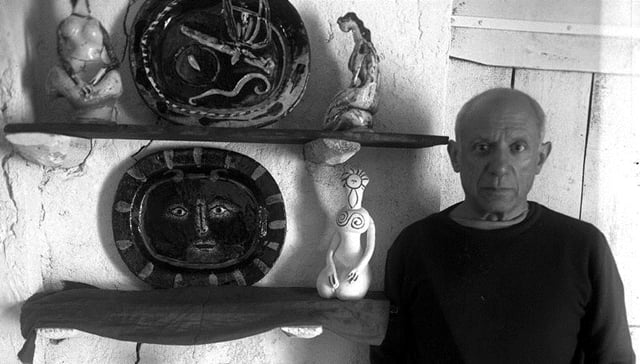Art World
Picasso’s Legendary Ceramics Studio Under Threat
Will the Madoura Pottery be saved in time?

Will the Madoura Pottery be saved in time?

Coline Milliard


Pablo Picasso, Vallauris- 1956 Exposition
Photo via: International Auctioneeers
The Madoura Pottery in Vallauris, Southern France, is crumbling down. According to the Journal du Dimanche (JDD), the workshop Picasso used to produce some of his best-known ceramic work is in a dire state. The walls are saturated with water. There’s a hole in the roof.
Living in Vallauris between 1946 and 1955, the Spanish giant embraced ceramics with gusto, and over 9,000 pieces came out of Madoura between 1947 and 1971, many of which are now fetching top prices at auction.
As artnet News previously reported, the Madoura Collection sale in June 2012 at Christie’s South Kensington is considered a landmark in the artist’s ceramics market. It offered 543 lots directly from the source and grossed a staggering $12,584,141, setting records for most of the pieces.
Today, a former priory in Vallauris hosts the grandly-named Musée National Picasso, whose star exhibit is the 1952 fresco La Guerre et La Paix, painted in the chapel.

Picasso at his Vallauris studio
Photo via: Daily Mail
But the pottery workshop is still as Picasso left it. “We have all the period furniture, the tables, tools, brushes, drying boards with which Picasso worked,” director Yves Peltier told the JDD. “Many other artists came in his wake, including Henri Matisse, Victor Brauner, and Marc Chagall.”
Almost abandoned for seven years, the facility was bought for €3 million ($4 million) by the association of local authorities. “Vallauris couldn’t afford to acquire Madoura, but we are working in collaboration with the association of local authorities to create a cultural hub focused on ceramics,” said the town’s mayor Michelle Salucki.
President of the association of local authorities and Antibes’ mayor Jean Leonetti has also expressed his commitment to the project. “We’ll do the most urgent work before December,” he told the JDD. “The study shows that the budget isn’t excessive.”
As Le Figaro points out, it isn’t the first time a Picasso studio had had to be saved at the 11th hour. The garret of Paris’ Grands-Augustins, where the artist painted Guernica (1937), was about to be swallowed up by a new hotel development when it was classified as a historic monument last May.